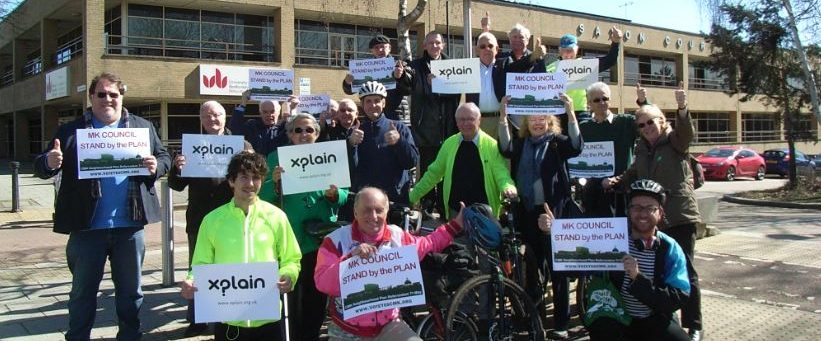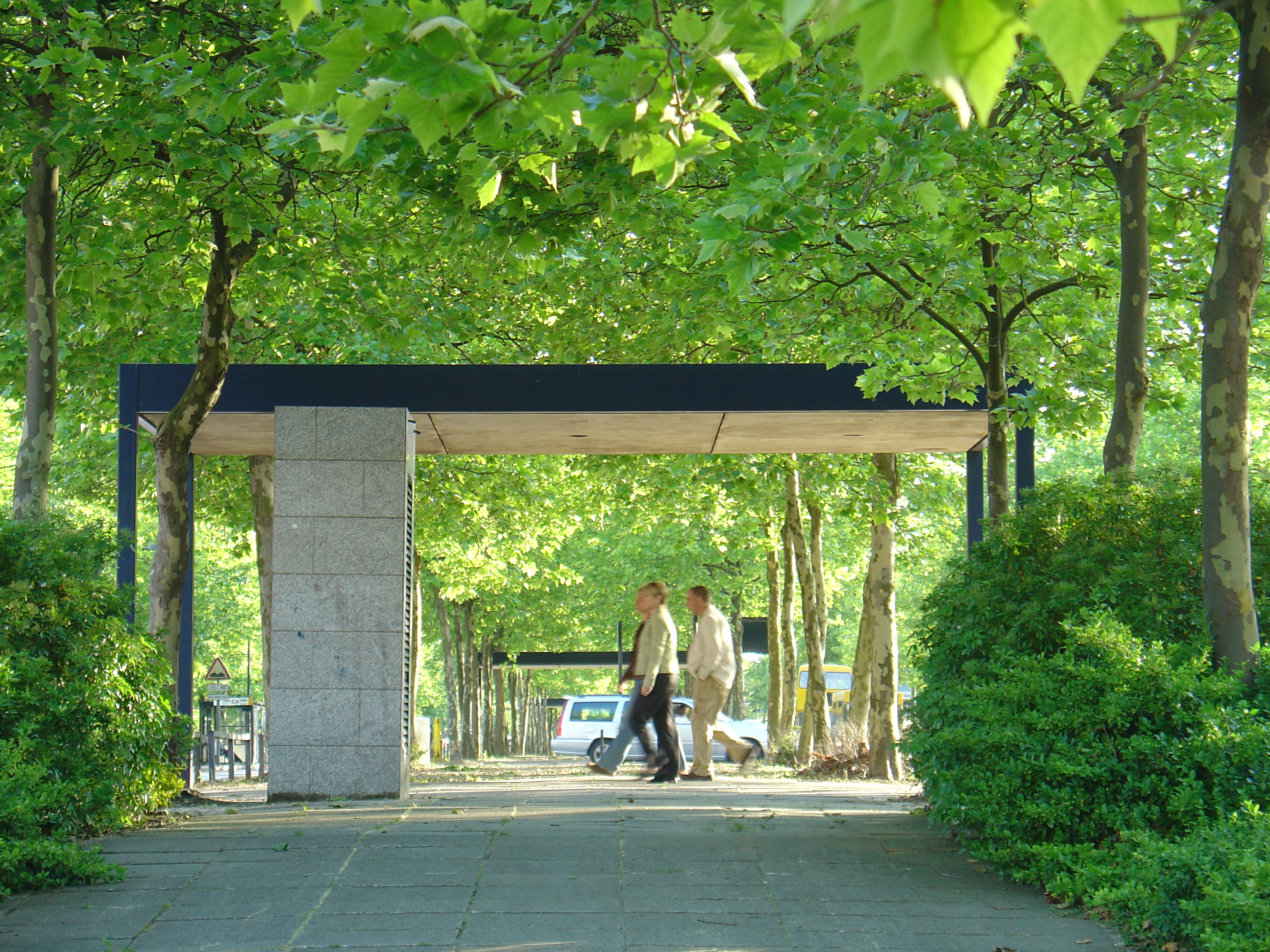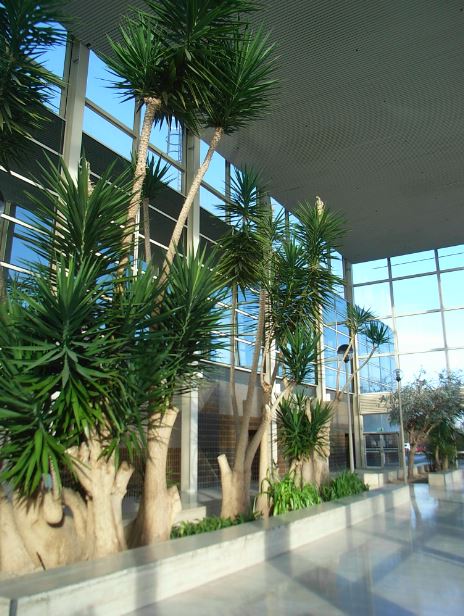Xscape wants to fix a massive black ‘X’ on its famous façade in Central Milton Keynes.

Some people say the 11 x 11 m (33 x 33 ft) sign will feel menacing – like a Nazi swastika on a Luftwaffe hangar. Others say it’s just an exercise in corporate branding.
In this guest column for Xplain, social psychologist Linda Corlett explains the remarkable power of X – for good or ill.
“Symbols and signs often evoke emotions that are triggered by our past associations with them. ‘X’ is a curious letter because it’s one of the few letters that is used alone. Historically it has portrayed negative and positive meanings as well as mystery.
Children in our part of the world grow up in an education system where a red ‘X’ denotes incorrect schoolwork. This is perhaps the earliest association we have with X where it triggers negative emotions.
When X it is printed as a CAPITAL letter, in BLACK and printed in BOLD, its meaning can be negatively interpreted because historically it is commonly associated with symbols of evil, torture, danger and death. For eg:

image courtesy Wikipedia
• SWASTIKA X – the most nihilistic symbol of all; when the Nazis adopted this ancient symbol of life they turned the swastika into the very essence of hatred and evil. In Germany, its use is outlawed unless it’s for legitimate purposes such publishing articles like this!
• SKULL AND CROSS BONES X – this is the universal warning symbol of death by poison.

Image courtesy acclaimclipart.com
• CAMP X – the Second World War training camp that taught sabotage, explosives-making and silent killing.
• CRIME X – X is used to mark the scene of a murder.
• GRAPPLE X was the code-name for Britain’s first thermo-nuclear weapons test in the Pacific Ocean. 
• XXXX denotes macho bravado as in ‘who gives a F**K?’ The clothing industry uses X to describe increasing degrees of ‘fatness’ eg. XL, XXL, XXXL.
• X-RATED signs denote pornography, the illicit and forbidden.  DRUGS which include the letter X in their names often have negative associations, eg Zovirax – blisters and cold sores, Ziprexa –schizophrenia, Xylocaines – pain, Xarelto – blood clots.
DRUGS which include the letter X in their names often have negative associations, eg Zovirax – blisters and cold sores, Ziprexa –schizophrenia, Xylocaines – pain, Xarelto – blood clots.
X can also be used as a symbol of protest.
For example, Malcolm X was born as Malcolm Little but famously replaced his slave-era surname with a capital ‘X’ to symbolise stolen identity and the fight for justice. Here, X reminds us of a torturous time in history.
X is also used to symbolise the mysterious or unknown: ‘The X Files’ denotes strange paranormal phenomena while the German scientist who discovered X-rays in 1895 named them ‘X-rays’ because the science behind them was unknown. STATION X was the code-name for Bletchley Park, the ultra-secret headquarters of Britain’s Second World War code-breakers. Although we make positive connotations with Bletchley Park, code-breaking is hacking which we associate with illegal entry – so the name may still make us feel uncomfortable.
In contrast, when presented in liquid metallic fonts, X signifies hi-tech precision technology, e.g. the X-planes airplanes and rockets, the Jaguar X-Type, BMW X5, Mac OS X and iPhone X.
X can also be used in positive ways. For example, we use x every day in our messages to one another. In lowercase ‘x’ means ‘thanks’, or ‘I like you’; ‘xxx ‘ means ‘I love you’.
The colour of text is important too. In red and gold, X can be glitzy and entertaining eg The X-Factor, or it can be festive, such as Happy Xmas. But a red cross on its own also signifies that something is incorrect or wrong. Red X’s are often used in the porn industry so they should be used with caution in public spaces!
The present Xscape logo is blue on silver.  Blue represents the sky and sea; the colour that most symbolises escape from everyday pressures. The sea often glistens with silver, a colour that is universally attractive and welcoming. Also the shape of the X is elegant, stretched and energetic; it symbolises exercise and health. These features are the whole point of MK’s Xscape, so in my opinion the original blue logo is clever, appropriate, attractive and perfectly adequate. It’s an appealing feature on the MK skyline.
Blue represents the sky and sea; the colour that most symbolises escape from everyday pressures. The sea often glistens with silver, a colour that is universally attractive and welcoming. Also the shape of the X is elegant, stretched and energetic; it symbolises exercise and health. These features are the whole point of MK’s Xscape, so in my opinion the original blue logo is clever, appropriate, attractive and perfectly adequate. It’s an appealing feature on the MK skyline.

Xscape’s proposed new 11m x 11m illuminated sign in ‘Galano Grotesque’ font
Of course, some people may like the proposed solid X, but I suspect many people will associate it with negative meanings and find it repellent. If there has to be a massive X on the building I’d suggest an elegant font in pale blue illuminated glass. But do we really need it?”
To comment on this planning application you can email MK Council’s case officer andrew.pommells@milton-keynes.gov.uk quoting ref number 18/01456/ADV. Or log onto MK Council’s planning portal to read details and file comments direct.






























 DRUGS which include the letter X in their names often have negative associations, eg Zovirax – blisters and cold sores, Ziprexa –schizophrenia, Xylocaines – pain, Xarelto – blood clots.
DRUGS which include the letter X in their names often have negative associations, eg Zovirax – blisters and cold sores, Ziprexa –schizophrenia, Xylocaines – pain, Xarelto – blood clots.




 Blue represents the sky and sea; the colour that most symbolises escape from everyday pressures. The sea often glistens with silver, a colour that is universally attractive and welcoming. Also the shape of the X is elegant, stretched and energetic; it symbolises exercise and health. These features are the whole point of MK’s Xscape, so in my opinion the original blue logo is clever, appropriate, attractive and perfectly adequate. It’s an appealing feature on the MK skyline.
Blue represents the sky and sea; the colour that most symbolises escape from everyday pressures. The sea often glistens with silver, a colour that is universally attractive and welcoming. Also the shape of the X is elegant, stretched and energetic; it symbolises exercise and health. These features are the whole point of MK’s Xscape, so in my opinion the original blue logo is clever, appropriate, attractive and perfectly adequate. It’s an appealing feature on the MK skyline.







 Winter in Campbell Park (c) Caroline Brown
Winter in Campbell Park (c) Caroline Brown